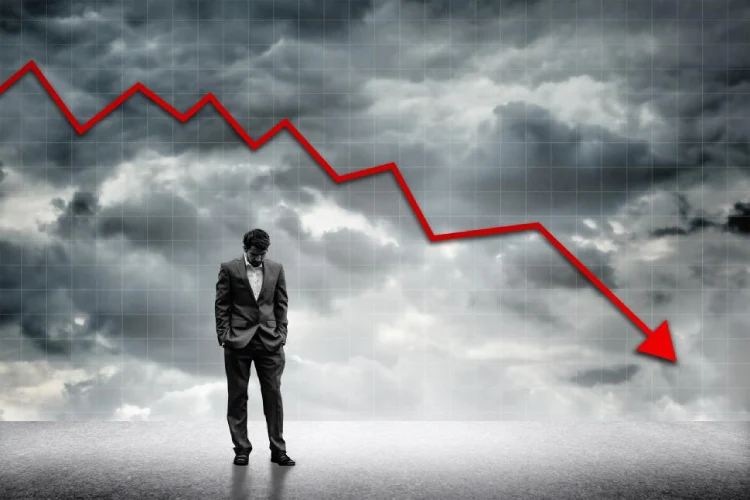In the face of a significant stock market downturn, panic sweeps through the hearts of investors like an unstoppable tidal wave. Fear creeps into every mind, unleashing a torrent of emotions that overpowers rational thinking. Instead of calmly analyzing the situation, individuals become captive to their own overwhelming reactions.
Picture this: the stock market takes a sudden nosedive. You witness a steep drop in the value of your investments, and panic instantly grabs hold of you. It’s a natural instinct, a primal response to a perceived threat. But here’s the catch: panic often clouds our judgment, blurring our ability to make sound decisions. Fear becomes the driving force, overpowering logic and rationality
Emotions run high during moments of market turmoil. You can practically feel the tension in the air. People become gripped by fear, anxiety, and even despair. It’s as if their worst nightmares are unfolding before their eyes. Instead of taking a step back and calmly assessing the situation, they surrender to their emotional impulses. And in doing so, they unknowingly sabotage their chances of making informed choices.
In the realm of investing, logic should prevail. But when fear takes the reins, emotions become the dictator. Suddenly, rational analysis is tossed aside, replaced by a whirlwind of panic-driven actions. It’s a dangerous game to play, where fortunes can be won or lost within a blink of an eye. The stock market, already a volatile beast, becomes a chaotic arena where emotions clash and reason is trampled underfoot.
Let’s examine three prevalent errors that investors frequently commit when encountering a decline in the market.
1. Selling off valuable long-term assets
In the face of significant stock market declines, our instincts drive us to hastily sell our long-term investments. But hold on! Instead of parting ways with those valuable positions, it’s time to seize the moment and consider acquiring more of those long-term stocks. When you embark on a long-term investment journey, it’s all about giving it time to flourish. So, the fluctuations of today pale in comparison to the magnificent rewards that await you seven to ten years down the road.
During a market downturn, an enticing option you can explore is pumping additional funds into your long-term investments. By doing so, you effectively lower your initial cost basis, granting yourself an even more advantageous entry point. Picture this scenario: You currently own 100 shares of the esteemed XYZ company, purchased at $50 per share. Suddenly, the stock plummets to $30 per share. Now, here’s the thrilling part—acquiring 25 more shares at this lower price brings down your average cost basis to a remarkable $46 per share. That’s an impressive $4 gain per share when considering your initial position on a total of 125 shares.
2. Believing the market will plummet indefinitely
Since its inception in 1928, the S&P 500 index has weathered a staggering 26 bear markets. These monstrous downturns in stock prices have left investors trembling with fear. Each time, the average loss amounted to a heart-stopping 36%! Imagine the devastation, the turmoil, and the shattered dreams. But fear not, for hope springs!
Throughout history, a bull market has always followed a bear market, bringing a wave of exhilarating opportunities. Stocks surge in value, soaring to incredible heights during this bullish frenzy. On average, investors have enjoyed an astonishing 114% increase in their stock holdings! It’s like witnessing a phoenix rise from the ashes, fueling dreams of prosperity.
Let’s pause for a moment and ponder a perplexing question: Why, oh why, do so many individuals end up losing their hard-earned money in the stock market? Brace yourself for mistake number three, dear readers: the failure to discern between a long-term investment and a short-term gamble.
3. Ignoring the distinction between long-term and short-term investments
When it comes to investing in stocks for the long haul, time becomes your trusted ally. Look at the major U.S. stock indexes like the Dow Jones Industrials, S&P 500, and Nasdaq. Since their inception, they have shown a consistent upward trend, defying even the most challenging times. Remember the unforgettable bear markets of the Great Recession, the catastrophic “Black Monday” crash in ‘87, and the devastating Covid-19 pandemic? Despite these colossal setbacks, historical data reassures us that long-term investment in U.S. stock indexes guarantees profits over time.
Imagine following in the footsteps of Warren Buffett, the legendary investor and ultimate buy-and-hold master. He built his fortune by identifying fundamentally strong stocks that were undervalued during bear markets. His powerful investing philosophy can be summed up in one of his most iconic quotes: “Be fearful when others are greedy, and be greedy when others are fearful.”
But here’s the million-dollar question: why do so many people end up losing money in the stock market? The answer lies primarily in short-term investing, which can be a treacherous path. The volatile nature of the stock market amplifies the risks associated with short-term investments. Sure, investing in a major U.S. index for more than seven years almost guarantees profitability. However, when you dabble in fleeting investments with random companies, you expose yourself to a much higher probability of losing money. Yes, even the big-name, reliable companies have their fair share of good and bad days.
Picture this: you enter and exit positions on a short-term basis, like every month or even every day. One unfortunate bad day, and your hard-earned investment money goes down the drain. The truth is, short-term investing is a risky game, especially if you lack experience. Seasoned stock traders with years of expertise can make a lucrative living from short-term trading, but as the age-old saying goes, “the bigger the risk, the bigger the reward.”
Investing for the long haul remains the ultimate strategy for outperforming the market
When you venture into the thrilling world of the stock market, brace yourself for a wild ride! It’s a tumultuous journey filled with soaring heights and heart-wrenching plunges. You’ll encounter days that make you feel invincible and others that leave you questioning your choices. With the right expertise, you can seize opportunities and take calculated risks for short-term gains. And if safety is your priority, behold the ultimate wisdom of historical data, place your bets on a long-term position in a major U.S. stock index!
Let’s face it: the stock market is no stranger to turbulence. Bear markets, those dark and ferocious periods of decline, typically linger for about 289 days—almost 10 months of nail-biting uncertainty. Bull markets, the glorious times of prosperity, typically last for a staggering 973 days—equivalent to 2.7 years of exhilarating growth and triumph. And oh, let us not forget the marvel that was the longest bull market in history—a whopping marathon from 2009 to 2020! During this astonishing stretch, stock values skyrocketed by a staggering 400%! Remember this crucial truth: when in doubt, time becomes your most loyal ally.

 Propel Your Product To Global Success
Propel Your Product To Global Success